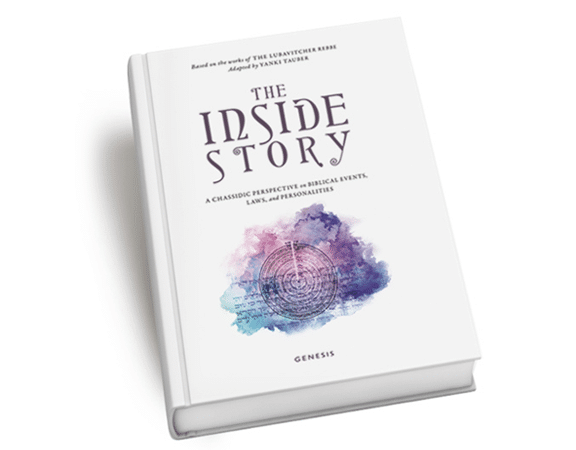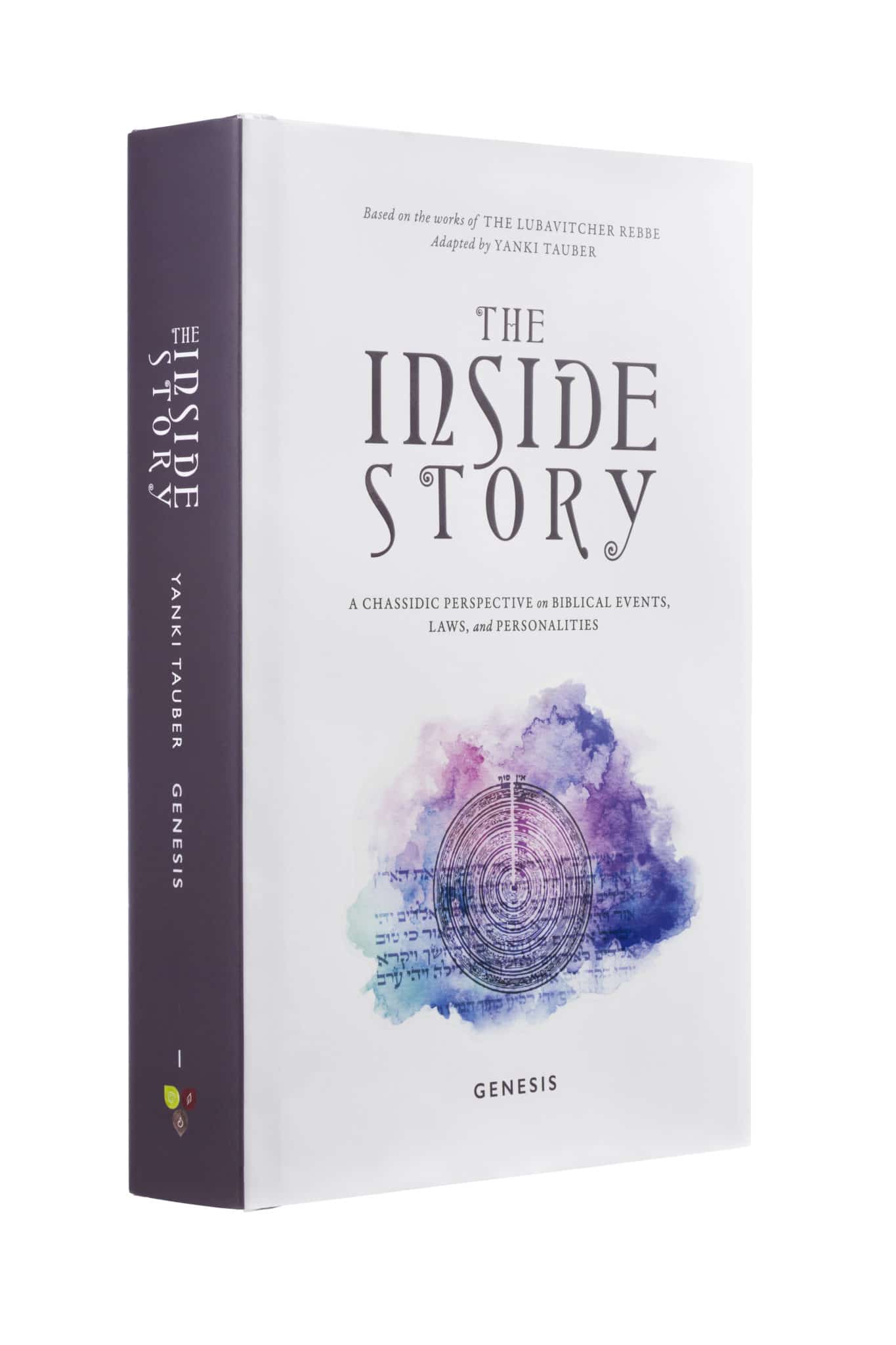The book of Genesis, the first of the five books of the Torah, chronicles the lives of the founding fathers and mothers of humanity in general and of the Jewish nation in particular: Adam and Eve, Noah, Abraham, Isaac, and Jacob; Sarah, Rebecca, Rachel, and Leah; Joseph and his brothers. More than history, their lives are templates of our own, in which we find the precedents for our every challenge and experience.
The book of Genesis consists of twelve sections (parashiyot), the last of which, Vayechi, is this week’s Torah reading.[1] The twelve sections of Genesis are: Bereishit, Noach, Lech-Lecha, Vayeira, Chayei Sarah, Toldot, Vayeitzei, Vayishlach, Vayeishev, Mikeitz, Vayigash, and Vayechi.
The name of a thing is the articulation of its essence.[2] Each of these twelve names embodies an entire Torah section, encapsulating the common theme and quintessential import of the section’s many narratives. So if we take these twelve names and read them in succession as a sort of shorthand or code, we get a synoptic account of the human story: the purpose of our creation, the soul’s transformation from a wholly spiritual entity to a physical human being, the manner in which we develop our self and environment, and the ultimate realization of our mission in life.
The twelve-word version of the human story reads like this:
Bereishit – Purpose
Noach – Tranquillity
Lech Lecha – Journey
Vayeira – Vision
Chayei Sarah – Invigoration
Toldot – Production
Vayeitzei – Excursion
Vayishlach – Delegation
Vayeishev – Integration
Mikeitz – End
Vayigash – Union
Vayechi – Life
Purpose
If there is one basic question that all “isms” and value systems must address, it is this: does the world exist for its own sake, or for the sake of some other, greater aim? Is there an axiomatic purpose upon which our existence turns, or is our existence its own axiom?
Bereishit is the Torah’s opening word and the name of its first section. The word means “in the beginning,” and it commences the Torah’s narrative of the world’s creation: “In the beginning G-d created the heavens and the earth…”. But in addition to its literal meaning,[3] bereishit expresses the axiom that G-d created the world to serve a purpose. Our sages note that the word bereishit begins with the letter bet, the second letter of the Hebrew alphabet. The story of creation, the Torah is saying, does not begin with G-d’s creation of the world; there is something that precedes it and upon which it is predicated.
Bereishit is also an acronym of the words bet reishit (“two firsts”)—a reference to the two primary components of the purpose of creation, both of which are called reishit: the Torah (called reishit in Proverbs 8:22) and the people of Israel (Jeremiah 2:3). The Torah is the guidebook that outlines how this purpose is to be fulfilled, and the people of Israel are the principal actors in its realization.
Tranquillity
Having established that creation has a purpose, we now proceed to the name of the second Torah section, Noach, which conveys what this purpose is: to transform a chaotic existence into a harmonious world.
“G-d desired a dwelling in the lowly realms”—in these words our sages describe G-d’s motive for the creation of the world.[4] The “lowly realms” is our physical world—a world whose coarseness and diversity belie the sublimity and singularity of its divine source. G-d desired that this lowly realm be transformed into a “dwelling” for Him—a place that is receptive to His presence, a place in which He is “at home”; that this diverse and strife-torn environment be transformed into a tranquil world, a world at peace with itself and its Creator.[5]
Noach (Noah)—the name means “tranquillity”[6]—achieved this on a microcosmic level when he created an island of tranquillity amidst the raging waters of the Flood: a floating island which contained specimens of every animal, bird and plant, and in which, for 365 days, the lion lived in peace with the lamb. Of course, Noach’s messianic world was temporary and embraced only a tiny corner of creation; the divine desire is that we transform the entire world into a “Noah’s ark” of tranquil perfection.
Noach also means “satisfaction”—a reference to the fact that this purpose has significance only because it satisfies the divine desire for “a dwelling in the lowly realms.” The creation of a tranquil world cannot be an end in itself—had the world not been created, there would have been no strifeful entity upon which tranquillity need be imposed. The endeavor of making the world a home for G-d is meaningful only because G-d desires it.[7]
Journey, Vision and Invigoration
The created existence is purposeful, the purpose being the satisfaction of the divine desire for a tranquil home on earth. To fulfill this purpose, the human soul is dispatched to the physical world, imbued with a vision of the purpose, and granted the ability to integrate this vision into all components of its psyche and character.
Lech-Lecha (“Go, you”), the third section of Genesis, derives its name from its opening verse, “And G-d said to Abram: ‘Go, you, from your land, from your birthplace and from your father’s house, to the land that I will show you.”[8] This, say the Chassidic masters, is the command issued to every soul before it enters this world: depart from your lofty origins, from your state of oneness with G-d, to journey to an unknown, alien place. Descend from your spiritual birthplace to enter a physical body and world, for this is “the land that I will show you”—the arena in which your mission in life will be fulfilled.
The soul, however, does not go alone. It is fortified with a vision (Vayeira—“And He revealed Himself,” from the verse “And He (G-d) revealed Himself to Abraham”[9]) of the divine truth, a vision that will be its guiding light in its effort to make the world a place that is hospitable to the divine presence.
But a vision alone is not enough. Unless the vision saturates the soul, permeating its every nook and cranny, it will be little more than an abstract theory or a “religious belief,” with limited effect upon the person’s day-to-day life. If our vision of G-d is to serve as the focus of our lives, it must become the object of our will, the vista of our mind and the yearning of our heart.
This is the message implicit in the name of the next Torah section, Chayei-Sarah (“The Life of Sarah”). The fifth section of Genesis begins with the verse, “And the life of Sarah was one hundred years, twenty years, and seven years.”[10] In the language of Kabbalah, the number “one hundred” represents the faculty of will, “twenty” connotes the intellect, and “seven” refers to the emotions;[11] the Torah is telling us that all aspects of Sarah’s psyche and personality were invigorated by her soul’s vision of G-d.
Production, Self-Extension and Delegation
We know why we’re here, and that we have been supplied with the vision and spiritual resources to carry it out. Now it’s time to get to work.
The word Toldot—the name of the sixth section of Genesis—means “progeny” and “products.” “The toldot of the righteous,” say our sages, “are their good deeds.”[12] The bricks out of which the earthly “dwelling for G-d” is constructed are the mitzvot, the deeds which transform a physical resource into an object of the divine will.[13]
Sanctifying one’s own life and surroundings through the performance of mitzvot is not enough: one must also extend oneself (Vayeitzei—“And he went out”) to places and people that lie outside one’s immediate environment. The Torah section of Vayeitzei relates how Jacob left the holy environment of his father’s home and the study houses of Shem and Eber, where he had spent the first half of his life in “the tents of Torah,”[14] to journey to pagan Charan and the manipulative Laban, where he had to contend with a hostile and materialistic world for twenty toilsome years. But it was here that Jacob attained the peak of his personal growth and where he founded the nation of Israel.
Vayishlach (“and he sent,” from the verse, “And Jacob sent angel-messengers to his brother Esau”[15]) connotes the next step in our efforts to make the world a home for G-d. What are we to do when we have extended ourselves to the utmost of our capacity? When we have reached out to those individuals and places that are at the very extremity of our communication skills and our ability to impact the world? We should then extend our reach even further by delegating and empowering others as our agents. Our influence upon others should not be limited to affecting their lives, but also to transforming them into teachers and developers who will in turn affect people and places that we ourselves could never reach.
In Torah law, this concept is known as the principle of shelichut. In the words of the Talmud, “A person’s shaliach (agent) is like himself,” and the shaliach’s actions and accomplishments are attributed to the one who empowered him to act in his stead.[16]
Integration
When a thief is breaking into your home, goes the Chassidic saying, there are basically two things you can do. You can holler, “Thief! Thief!” and drive the thief away; or you can capture the thief and teach him an honest profession.
On the more elementary level, we can make the world a more G-dly place by chasing the thief away. We can stimulate the positive in ourselves so that it overpowers our own negative instincts, and work to similarly bring out the good in others; we can seek to impose a divine harmony upon a basically divisive and belligerent world.
But like the banished thief, the world has not really changed. A better, holier, more peaceful world has been imposed upon it, but underneath this new order, the “old” world remains. It has been vanquished, not transformed; suppressed, not elevated.
After a person has gone through the “production,” “excursion” and “delegation” phases of his mission in life, the next step is to integrate these gains into the fabric of reality.
Vayeishev (“And he settled down in tranquillity,” from the verse “And Jacob settled down in tranquillity in the land of his father’s dwelling”[17]) is the “settling in” of our G-dly deeds to become the permanent, intrinsic state of our world.
End, Union, Life
The completion of the “integration” phase marks “the end” (Mikeitz, the name of the tenth section of Genesis)—the realization of the end-goal of creation. The divine home is now complete; the world has become a harmonious abode for its Creator.
The “end” itself has three stages, as successively deeper dimensions of the world’s divine harmony come to light. In the first stage, the world is a perfect “vessel” or vehicle for G-d. A further stage reveals its union (Vayigash—“And he approached”—the name of the eleventh section) with its divine source: not only is the world completely receptive to its Creator, but it is revealed to be one with the divine reality, an expression of G-d’s all-embracing truth.
The highest expression of creation’s fulfillment is the eternal life (Vayechi—“And he lived”) that is the hallmark of the final phase of the Messianic Age. Death is a most natural phenomenon in the world in which we live today—an imperative of the finite and temporal nature of the physical. But the physical was not always mortal. The world, as G-d created it, had the capacity for eternal life—death came only with the first sin of man, with the first breach between G-d and His creation. In a world that is one with G-d, a world that is in complete harmony with its source, there is nothing to disrupt the flow of vitality from the Creator to creation.
The Torah section of Vayechi describes Jacob’s demise: his parting words to his children, his passing, and his funeral. Yet the section’s name—the one word that conveys its essence—means “And [Jacob] lived.” Vayechi expresses the axiom that, in truth, “Our father Jacob did not die.”[18] Jacob’s life is immutable, because it is a life in the ultimate sense of the word: life as an exercise of harmony with the divine.
Bereishit to Vayechi, the section names of Genesis chronicle the most basic truths of our existence: that life is purposeful, its purpose being to satisfy the divine desire for a home on earth; that the soul descends to earth furnished with a vision of G-d and the capacity to integrate this vision into its self and character; that man must sanctify his life with acts of goodness, extend himself beyond his “natural” environment, further extend himself by delegating of his powers to others, and labor to not only command but also transform reality; that our efforts will invariably result in a world united with its G-d; that life—pure and eternal—is the ultimate expression of the divine in man.
Based on an address by the Rebbe, Kislev 18, 5750 (December 16, 1989).[19]
Adapted from the teachings of the Lubavitcher Rebbe by Yanki Tauber.
[1]. A Jew “lives with the times” (as Rabbi Schneur Zalman of Liadi put it) by attuning his life to an annual Torah reading cycle. Each week, another section of the Torah is studied, publicly read in the synagogue, and applied to one’s daily life.
[2]. Thus the Midrash (Bereishit Rabbah 17:4) relates that when the angels asked G-d, “This human being, what is his worth?” G-d demonstrated Adam’s superior wisdom by having him name all living things. Adam’s ability to identify a creature by its name demonstrated his insight into that creature’s essential qualities and its role in creation, and that he therefore possessed the capacity to orchestrate creation’s service of its Creator.
[3]. Indeed, according to the laws of Hebrew grammar, the word bereishit is not ideal usage; the more correct term for “In the beginning” is barishonah. This leads even a commentator such as Rashi, who always interprets the Torah according to its most elementary meaning, to offer the acronymic interpretation of bet reishit (“two firsts”) related in the text.
[4]. Midrash Tanchuma, Nasso 16; Tanya, ch. 36.
[5]. In the words of our sages, “The Torah was given in order to make peace in the world” (Talmud, Gittin 59b; Mishneh Torah, Laws of Chanukah, 4:14).
[6]. See Rashi on Genesis 5:29.
[7]. The word for “desired” used by the Midrash in the statement “G-d desired a dwelling in the lowly realms” is nitaveh, from the root taavah, which connotes a supra-rational desire. There is no logical explanation as to why G-d desired ”a dwelling in the lowly realms”; we only know that He desired it, and that the satisfaction of this desire is the ultimate purpose of creation.
[8]. Genesis 12:1.
[9]. Ibid., 18:1.
[10]. Ibid., 23:1.
[11]. See Likkutei Torah, Berachah 93a-c, et al.
[12]. Pesikta Zutrati; Rashi on Genesis 6:9.
[13]. The Torah section of Toldot opens with the birth of Isaac’s two literal progeny—Jacob and Esau—representing the two basic categories of mitzvot: mitzvot whose object is to “do good,” and mitzvot whose objective is to “turn away from evil” (see the essay “The Struggling Twins” in The Inside Story [VHH 1997], pp. 49-56).
[14]. Genesis 25:27; Rashi on verse.
[15]. Genesis 32:4.
[16]. Talmud, Kiddushin 41b; Mishneh Torah, Laws of Agents, 1:1. See Likkutei Sichot, vol. XXXV, pp. 113-119, and sources cited there.
Editor’s note: The Rebbe himself is a prime exemplar of the power of shelichut. As of his writing, more than 3000 of the Rebbe’s sheluchim are active in virtually every Jewish community on earth, and their number is daily increasing. As every shaliach will attest, his or her achievements far exceed what their own talents and potentials could generate; it is only because they act as the Rebbe’s emissaries, and are thus virtual extensions of his person, that they have been able to influence so many people and make such an impact on their localities. By empowering others as his sheluchim, the Rebbe extends his own tremendous power to touch people’s lives to places and circumstances where he himself cannot be present physically.
[17]. Genesis 37:1.
[18]. Talmud, Taanit 5b; see Rashi.
[19]. Sefer HaSichot 5750, vol. I, pp. 176-178.








